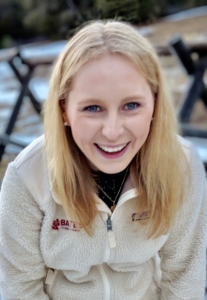When Autism is Hiding Behind an Eating Disorder
“But you have always been able to look me in the eye.” This was the first thing my psychologist said when I told her I thought I had Aspergers.
The inability to make eye contact with others is a hallmark sign of an Autism Spectrum Condition. My psychologist told me that all of the people she had previously diagnosed with Aspergers had a really hard time making eye contact, and that wasn’t the case with me.
What she didn’t know was that eye contact wasn’t something that had come naturally to me. After all, she didn’t meet me for the first time until I was 14 years old. By 14, I had eye contact pretty much down to an exact science. Gone were the days of my mother walking me down the elementary school hallway holding my hand and telling me to look my teachers and peers in the eye and say, “hello Sally” or “good morning Mrs. Johnson.”
It was because of my intelligence that I had learned how to compensate for almost every aspect of my developmental disability and go unnoticed. In fact, from the outside, I certainly didn’t “look” autistic at all. I dressed well and reigned in my natural tendency to have odd behaviors. By the time I got to the University of Notre Dame, I was a varsity athlete and was constantly surrounded by my many friends. I went to parties despite the way the noise and crowds distressed me and I participated in group conversations.
What was unknown to even my psychologist, was that my whole life, I had exhaustingly studied people the way others study subjects at school. The behaviors and conversations that came naturally to other kids at the lunch table, I watched, copied, and implemented right down to the phrases they used when speaking to one another. Every time I spoke it was meticulously thought out and calculated so as not to make another dreaded social faux pas or alarm others to the fact that I was different.
Even once I had been given my ASD diagnosis at 22, I had a close friend tell me, “But you’re not at all like my cousin. He has autism and you act so different than he does.”
The thing is, presentations of autism vary from person to person, but it is much more common to hear about those with stereotypical “male” interests. Those who are obsessed with train schedules, maps, airplanes, computer games, and baseball cards get a lot of notoriety. Their intense hyperfocus on these items screams autism to many professionals, as does their tendency to behave oddly in public.
On the other hand, those with stereotypical “female” interests, like an obsession with American Girl dolls, is less likely to be identified as autistic than those with an obsession with trains. So, when I at age 10 dedicated a room in my house to my 13 American Girl dolls and all of their beds, horses, and carriages, no one thought twice about it. Nor did they think anything of the unparalleled distress I displayed if someone entered the room and changed my order and placement of the dolls.
It is because of this inherent nature to hyperfocus and think rigidly, that people on the autism spectrum may have a higher risk of developing an eating disorder over their neurotypical peers.
I had been bullied throughout my middle school and high school years, and it was my own natural tendency towards black and white thinking is what initially led me to use eating disordered behaviors. I came to believe that if I was lighter, faster, and won more athletic competitions, then other girls my own age would find me worthy of friendship.
Losing weight was my tool to get there. It would make me faster at my chosen sports of running and rowing. If I was good at these sports, then more people would want to be friends with me.
However, what started out as an autistic girl’s tool to gain friendship, soon became an obsession with food and weight. As my diet decreased in size, the lack of nutrients going to my brain caused my already rigid thinking to worsen. Before I knew it, I was suffering from an all-consuming eating disorder.
At my worst, I still had no idea why I was sick. It was perplexing to my doctors as to why I didn’t have the poor body image and desire to look skinny common of those with my condition. Instead, I was just fixated on a numbers. I was obsessed with manipulating the scale and I couldn’t stop.
It wasn’t until I was 22 years old, 4 years after my anorexia nervosa diagnosis, that I was diagnosed with an Autism Spectrum Condition. All of a sudden everything made sense. There was a reason not only to my fixation on food and numbers, but also to my struggles with friendship, rigid thinking, and emotional dysregulation that plagued my childhood.
Simply knowing that I was autistic put my mind at ease. Addressing my eating disorder by addressing the challenges I face from my autism is what finally freed my mind.
I recently published a memoir, My Perfect Emotionless World, that describes my experiences in high school as an undiagnosed female on the autism spectrum and how it led to the development of my eating disorder. I hope that by publishing my memoir and sharing this experience with the world, that more professionals will become aware of the comorbidity between the two disorders.
Savannah Ryder holds a BBA in marketing and successfully completed four years as an NCAA Division 1 athlete on a women’s rowing team. Today, Savannah is a student at Columbia University in the City of New York in the Graduate School of Architecture, Planning, and Preservation.





